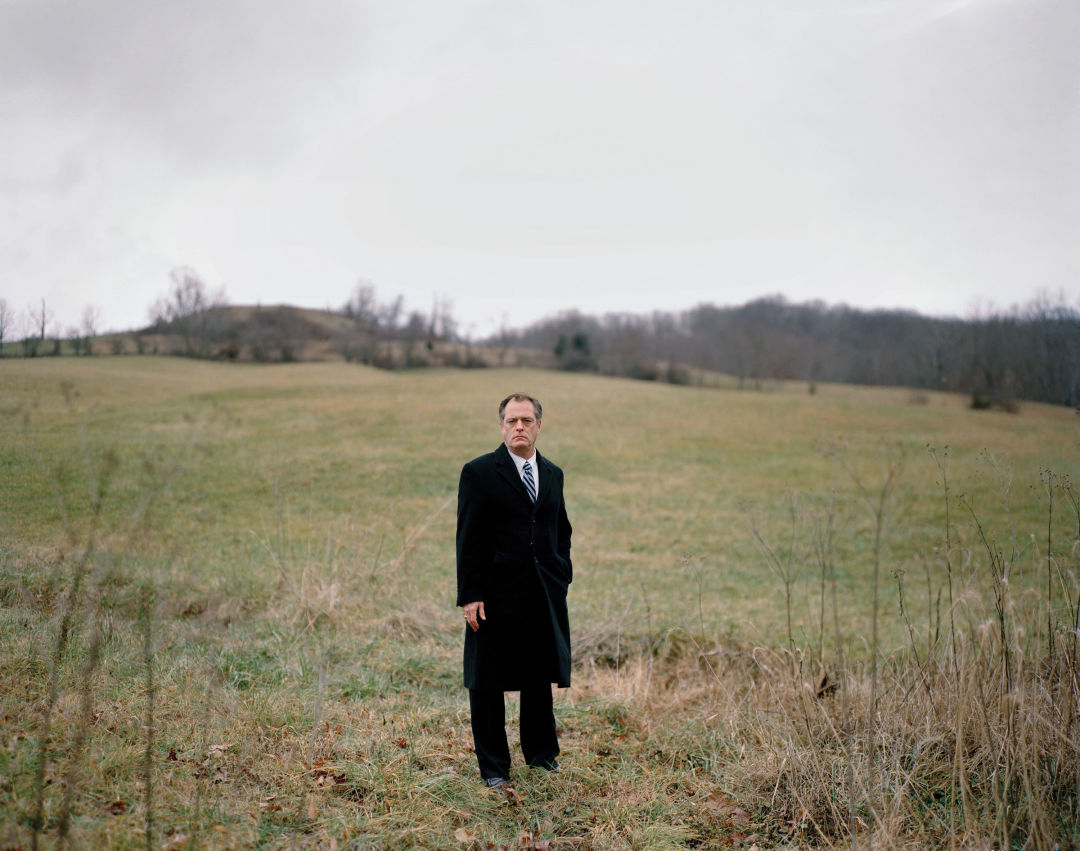NCF Alum Rob Bilott Battles a Chemical Polluter

Rob Billot on the Tennants' land in West Virginia.
Image: Bryan Schutmaat
Sarah Barlage calls her husband, Rob Bilott, “stubborn.” That’s an understatement. Bilott, a 50-year-old Cincinnati-based environmental attorney, has devoted the last 18 years of his life to proving that DuPont for decades used a chemical—perfluorooctanoic acid, or PFOA—even though the company knew it was poisoning the drinking water of thousands of people.
Bilott graduated from New College of Florida in 1987 and regularly vacations in Sarasota with his wife and three sons. When he entered New College, he says, his goal was to be a city planner.
“I was a political science major,” he says. “I tried to avoid anything that involved numbers and math. It was rather ironic that I ended up dealing with chemicals.” But he credits New College for instilling skills that equipped him well for battling the establishment. “They did a great job in teaching you how to think critically, how to analyze data, how to question what you’re seeing and look at it for yourself,” he says.
In January, Bilott was the subject of a New York Times Magazine story, “The Lawyer Who Became DuPont’s Worst Nightmare.” He says that after being so close to the case for years, he’s been surprised by the outpouring of response to the story.
In 1998, Bilott, a corporate defense attorney with the prestigious Cincinnati firm Taft Stettinius & Hollister LLP, got a call from a farmer, Wilbur Tennant, who lived in the Appalachian town of Parkersburg, W.V., where DuPont’s Washington Works factory was located. Tennant’s cows were dying in horrible ways—deranged, frothing at the mouth and bellowing in pain. Tennant had graphic photos and autopsy reports, and was convinced DuPont’s chemicals had poisoned the creek near his farm.
Bilott was an unlikely champion. He had spent his career on the other side of the table, defending corporate polluters. But partly out of courtesy—his grandmother had lived nearby—Bilott met Tennant. “The evidence was overwhelming. There was something clearly bad going on,” he recalls. He took the case.
Bilott discovered that although DuPont had been using PFOA for more than 60 years, state and federal regulators had never heard of it, even though PFOA is used to make Teflon and many other products, from carpets to dental floss to make-up. Bilott’s long battle has proven that the chemical—which is now in the bloodstream of billions of people and fish and animals all over the planet— is associated with cancer and other diseases.
After poring over hundreds of thousands of pages of DuPont documents, Bilott filed a class-action lawsuit in 2001 on behalf of 70,000 people who had been drinking tainted water. He proved in court that DuPont knew the substance was toxic and hid the information from its workers, the public and government agencies.
DuPont settled in 2004 for more than $300 million, which included installing filtration plants, funding an independent study to determine whether PFOA was linked to any diseases and medical monitoring if links were found. The study concluded that PFOA is linked to kidney cancer, testicular cancer, ulcerative colitis, thyroid disease, preeclampsia and high cholesterol.
Now Bilott is co-lead counsel in a federal case on behalf of 3,500 plaintiffs diagnosed with PFOA-related diseases. The first trial began in October 2015 and resulted in a $1.6 million award to a woman with kidney cancer. More cases will begin this year, and Bilott says the bulk of the trials will start in 2017.
But beyond those directly affected by PFOA, Billot’s work exposed that, contrary to what many consumers believe, regulators such as the U.S. Environmental Protection Agency (EPA) do not monitor all the chemicals manufacturers use or protect the public from most toxic substances. In reality, the EPA’s oversight of polluters is toothless. The agency can only investigate and regulate a chemical if the company making or using it voluntarily releases information that it poses risks.
After Bilott revealed the toxic effects of PFOA, the EPA filed a lawsuit against DuPont. “DuPont had failed to report that PFOA was in the drinking water and it was able to cross the human placenta into baby blood,” Bilott says. “It was resolved in 2005 as the largest administrative penalty [$16.5 million] in the EPA’s history at that point in time. But it had already been 30 or 40 years in the environment. They could have [begun] regulating this chemical, decades earlier, if given the information when they should have gotten it.” As part of the EPA settlement, DuPont agreed to stop making and using PFOA in 2015.
In May 2015, 200 scientists around the world signed the Madrid Statement to express their concern about PFOA—and related fluoropolymers, since DuPont and other chemical makers, while no longer using PFOA, have begun to make similar chemicals with different names. Indeed, there are tens of thousands of unregulated chemicals now in use, with more being made every year. The nonprofit Environmental Working Group is working to enable the EPA to require corporations to report on new chemicals and their health risks before using them.
Bilott says he has no idea when the cases will be over. DuPont has appealed the $1.6 million award to the woman with kidney cancer. The work has taken its toll on him. “I have gray hair and more of it,” he says lightly. But he’s also been invigorated by the results. “I am pleased to see that there seems to be more attention being paid to whether this chemical is in water supplies and whether it’s there in levels that are posing unsafe risks. People should not be drinking this.”
Bilott made sure long ago he wasn’t using Teflon or any PFOA product—such as microwavable popcorn, since PFOA used to coat the bags—but he says there’s more we can learn from this case.
“One person can make a difference,” he says. “If you’re passionate about something like the Tennants were, you can make [changes that] affect way beyond your own community. The information revealed here deals with something that is in everyone’s blood across the world.”



